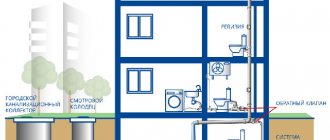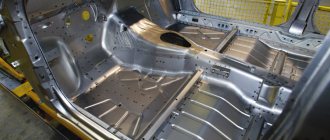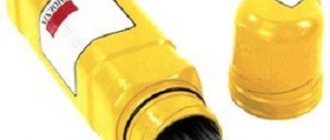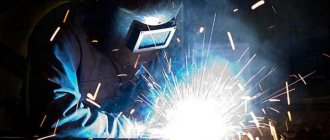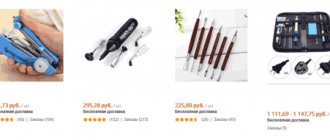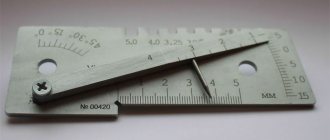Industrial society needs welders! In cities there will always be large enterprises related to metal and structural assembly. Anyone can learn a craft, but not everyone can achieve mastery. The average person, after a day of instruction, will be able to weld one part to another, but the result will be sloppy work, with a seam devoid of aesthetics and durability. A professional has knowledge of physics and chemistry, and 10,000 hours of experience. The result of his work will be a product with a neat seam and a strong connection, which several generations to come can admire and use. To achieve such results, the profession needs to be trained for many years. In this article we will tell you what categories exist for welders, how their qualifications improve, and what bonuses a person who sets out on the path of “fire and metal” receives for each stage of development of his skill.
Welders are creative people; when they receive the rank and skill, an artist is able to realize his idea using a welding machine instead of brushes, and a sheet of metal instead of a canvas. But for this you need at least 4 rank.
Categories
Before we begin to consider the stages of a career path in the profession, let’s consider what categories there are? Their analysis will help you choose the relevant direction and build on the needs of enterprises and achieve mastery in a specific specification.
Press welding
It is performed using a special pressing machine. The operator controls the device, and under the influence of high temperature and strong pressure, the components and structures are connected. Using a press, you can weld almost any metal alloy, even non-ferrous ones, since the press does not use electrodes.
Diffusion welding
A welder in this category is a real jeweler, since he will have to work with expensive samples. Diffusion works are not intended for mass production, but for special tests with a piece exhibit. Experiments are carried out in honeycomb furnaces, where the metal can be enriched with nitrogen to improve the material.
Electron beam
Using this method, unique components are created. They are created in a vacuum environment to prevent the entry of foreign elements. The result is parts suitable for thin-walled crafts, for example, for jewelry components, since they cannot withstand high heat, which is typical for other categories. It is possible to debug serial production. The responsibility of the specialist is that he needs to closely monitor the automation and instrument readings to ensure stable operation of the machine and obtain the desired result.
When working with a laser you need to be delicate and careful!
Termite
Welders in this category make connections using the thermite method. Qualified workers install the press, adjust the surfaces, lubricate the mold and fill it with material, and dry the resulting product. Additional responsibilities include crucible preparation and firing. Before connecting the elements, the specialist heats the surfaces of the parts to be joined, drills holes and processes the resulting product after welding.
Gas
Welders of this specification will need to join parts for complex structures and machinery. Weld the pipeline in unusual positions, and also be able to dismember it using a cutter. Gas welders can work with almost all types of alloys and metals.
Electric
Workers in this industry create connections not only using gas welding, but also using arc, plasma and non-consumable electrode welding - the argon arc method. Responsibility of the highest level since the resulting seams must withstand high mechanical and vibration loads, as an example - a bridge for freight transport. In this category, the ranks of welders are clearly delineated due to high responsibility and interaction with atypical, experimental parts.
Qualification of masters
Workers are periodically certified by NAKS (National Welding Control Agency). Based on the test results, qualifications of 4 degrees are assigned.
- A specialist with this qualification takes part in the assembly of various structures.
- The foreman carries out control functions and performs tasks to distribute instructions regarding work to other participants.
- level is responsible for monitoring the progress of welding work at the enterprise.
- the level is assigned to engineers who approve documentation.
Recommended reading: Underwater welding
In addition to levels, masters have categories depending on their knowledge and ability to use welding technologies. One of them is working with devices for point joining of parts. There are no electrodes here, the process is not difficult.
It is more difficult to control diffuse welding units. They produce a high-quality seam. There are welders whose classes and categories allow them to work in a vacuum, connecting workpieces made of special-purpose alloys. This is done by highly qualified craftsmen.
There is thermite welding, gas welding, which allows cutting metal workpieces. The most common category is electric welder. If he performs work with gas equipment, he is called an electric gas welder.
NAKS is engaged not only in testing the knowledge of personnel, but also inspecting welding equipment.
Rank
People who want to associate themselves with the profession are interested in how many categories does a welder have? There are six career stages in total; let’s look at each in more detail.
1st category
The highest rank cannot be achieved without being a yellow-haired student. This is the beginning of the journey of novice specialists. At this level, simple tasks are performed, such as joining rough workpieces and getting your hands on cutting metals. This level is assigned to graduates of technical schools.
2nd category
Graduates of a specialized technical school can hope to be awarded a second-level rank. The skills acquired in vocational schools are enough to cook in a vertical and lower position. But in order to perform complex things, such as sealing pipelines, experience and knowledge are not yet enough.
3rd category
Third-level welders are also awarded to graduates of specialized educational institutions, even without any experience of working in industrial enterprises. Excellent students must be able to weld corner vertical and horizontal joints. A third-class specialist must be able to make sealed seams on pipes. The skill of reading drawings and reproducing a product based on it, understanding the operating principle of technology, all this is also the responsibility of a specialist at this stage.
4th category
A stage 4 specialist must have a solid package of skills. Be able to do almost any work except ceiling work. An applicant for level 4 must weld pipes so that the seam is 100% tight. You will need to not only be able to read drawings, but also write!
5th category
The fifth career step requires the ability to work in all positions. The ability to cut the necessary elements of any shape from a layer of iron is one of the requirements for the candidate. Since working with high-pressure pipelines is within the competence of the hard worker at this stage, he must be able to make high-quality sealed seams, because the level of responsibility is high, an unreliable seam may not hold up, and the line will break
6th category
The highest rank of welder, which includes all the experience of the previous stages. Everything that a 5th level specialist can do, a 6th level master must be able to do. At the highest stage of the welding career, the worker is allowed to work with exclusive orders, for example, with innovative alloys. The master chooses the optimal operating mode for himself and knows how many materials he will need. His professionalism is sufficient for tasks that require innovative thinking and a non-standard approach.
How to increase the rank of a welder
Stumbling around at one stage of career development is not the best idea; it leads to a loss of motivation and a decline in thought processes, as the brain stops learning and begins to age. This is why you need to move up a notch in order to not only earn more, but also feel healthier, but how to do this? How to improve a welder's grade? If you work at a manufacturing enterprise, an authorized commission can arrange a test and promote the hard worker if he successfully completes the task. Small enterprises cannot improve their skills on their own, but they can send their employees to special courses or educational institutions. It is important to first find out what you will receive as a result of the training; a piece of paper about simply completing the course will not help your career in any way! An increase in the welder's rank can be obtained by obtaining a certificate or document of the established form. After you present it to the company’s accounting department, your salary is revised and access to work corresponding to the new competence is opened.
A list of skills that a vocational school graduate must demonstrate to obtain the desired rank.
NAKS
To ensure the career growth of a NAKS welder, certification must be passed by companies and enterprises specializing in welding processes. Its purpose is to authorize organizations to promote employees and legally confirm that the enterprise has the technical organizational and other capabilities to ensure that the certification of welders has legal force.
Read how to pass the NAKS certification
Here
The company receives NAKS accreditation. This gives the competence to improve the qualifications of its employees.
Pros and cons of being a welder
This area of activity is constantly in demand and therefore pays well, but as in any profession there are always advantages and disadvantages - here is their description:
- It is not uncommon when you have to work in extreme conditions in which you can get injured.
- Protective clothing, helmets and masks cannot completely eliminate the impact of ultraviolet radiation on the eyes. Vision deteriorates over time. What welder doesn't wear glasses in his old age?
- During the joining of alloys and welding of metal, harmful fumes are released. The gas enters the lungs and over time this will lead to occupational diseases - silicosis, asthma, pneumoconiosis.
Every year, labor protection and trade unions strive to improve working conditions and supply progressive protective equipment for their colleagues. The maximum rank of a welder guarantees a high salary and freedom of action. It’s nice that this profession is characterized by a clear and accessible career path; with the help of experience and diligence, you can become a master, and then after a few decades retire to a decent retirement and share your professional achievements and funny stories with your grandchildren.
Welder protection methods are improving every year. Enterprises are interested in making working conditions less harmful and not endangering the health of employees.
IV. Responsibility
A manual arc welder with a consumable coated electrode is responsible for:
1. For improper performance or failure to fulfill one’s job duties provided for in this job description - within the limits determined by the current labor legislation of the Russian Federation.
2. For offenses committed in the course of carrying out their activities - within the limits determined by the current administrative, criminal and civil legislation of the Russian Federation.
3. For causing material damage - within the limits determined by the current labor and civil legislation of the Russian Federation.
4. ____________________________________________________________________
This job description has been developed in accordance with the provisions (requirements) of the Labor Code of the Russian Federation dated December 30, 2001 No. 197 FZ (Labor Code of the Russian Federation) (with amendments and additions), the professional standard “Welder” approved by order of the Ministry of Labor and Social Protection of the Russian Federation from November 28, 2013 No. 701n (as amended by order of the Ministry of Labor of Russia dated December 12, 2016 No. 727n) and other legal acts governing labor relations.



